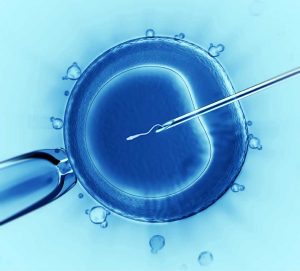Conceiving a child and procreating is a natural human tendency. Many of us are blessed with children. However, some couples do face obstacles in their journey towards parenthood.
Modern fertility treatments such as in-vitro fertilisation (IVF) has helped many couples to conceive. Current IVF technology had seen many advancements, thus achieving a higher pregnancy rate. On that same note, IVF has also become safer for patients.
Common risks associated with an IVF procedure are ovarian hyperstimulation (OHSS) and multiple pregnancies. The risk of OHSS has reduced dramatically with the current IVF protocols. However, the risk of multiple pregnancies varies depending on several factors such as the age of the woman, quality of the embryo, and number of embryos transferred into the womb.
A well established IVF centre have their own medical guidelines pertaining to the number of embryos to be transferred into the womb. Some countries have their own national guidelines which advises fertility specialists on the number of embryos to be transferred based on patient and embryo factors.
Statistical probability points towards a higher pregnancy rate with the increasing number of embryos transferred. In conclusion, the more embryos transferred into the womb, the higher the pregnancy rate.
Why the concern about the number of embryos transferred?
The journey towards parenthood does not stop with a positive pregnancy test, it’s only the beginning of the journey. As fertility doctors, we aim for couples to have a healthy baby at the end of their journey and not just rejoice over a positive pregnancy test.
If twins or triplets are conceived as a result of fertility treatment, it carries a significantly higher risk during pregnancy which can lead to pregnancy loss and a great emotional scar for the affected couple.
The risks that accompany multiple pregnancies
Miscarriage:
Being pregnant with twins, triplets, or more poses a higher risk of miscarriage. First trimester complications such as bleeding and severe morning sickness are more common in such pregnancies. These complications can lead to higher miscarriage risk.

Premature birth is when the baby is born before 37 weeks of gestation. In multiple pregnancies, the risk of babies being born prematurely is significantly high. The complications to the babies born prematurely depend on their birth weight and how soon they were born. Common complications are breathing difficulty — they may need breathing support in an intensive care unit (ICU); infections of their guts; vision and hearing problem and long term mental retardation (cerebral palsy). The risks of these complications decrease when the babies are born closer to term or when their weight is heavier.
Growth restriction (low birth weight):
Low birth weight in multiple pregnancies is commonly due to prematurity. In multiple pregnancies, babies are fighting for nutrition and the placenta may not be able to cope with the demand. Nutrition may not be equally distributed between babies, thus a growth discrepancy is common. Babies of multiple pregnancies are typically smaller than a single-baby pregnancy.
Medical conditions during pregnancy:
Risks of developing medical complications such as high blood pressure, preeclampsia, and gestational diabetes in multiple pregnancies are about two to three times higher.
The risk of gestational diabetes (GDM) may be higher due to more than one placenta which can increase insulin resistance. GDM, not controlled from early on, can lead to a big baby (macrosomia). This, in turn, leads to an increased risk of birth trauma.
High blood pressure in a more severe form in pregnancy is known as pre-eclampsia (PE). PE leads to growth restriction and also can damage the mother’s kidney and liver.
Caesarean section:
The risk of cesarean delivery increases in multiple pregnancies. However, this does not mean that twin pregnancies are only delivered by a caesarean section. An obstetrician will determine the best mode of delivery of a twin pregnancy based on several factors. However, in the presence of complications of multiple pregnancies such as gestational diabetes, pre-eclampsia, and growth restriction, the need for delivering via a caesarean section is higher.
What is the solution?
As a fertility doctor, I always advise couples to aim for a singleton pregnancy, one at a time. The dilemma is always on how to balance between the success rate of an IVF treatment and the risk of multiple pregnancies.
This is how it can be done.

In an IVF treatment, an embryo or more can be replaced into the womb at 2 stages, namely at cleavage stage (2 to 3 days old embryo) or the blastocyst stage (5 to 6 days old embryo).
An embryo at the blastocyst stage gives a higher pregnancy rate because they are the better embryos. Only a good quality embryo can grow from the cleavage stage to a blastocyst stage.
When embryo transfer is done with a blastocyst, ideally one embryo is selected to be transferred into the womb. This strategy gives a good pregnancy rate and minimises the risk of twin pregnancy. However, there is a very small chance that the blastocyst can still split into twins.
Preimplantation genetic diagnosis (PGS):
Genetic testing can be done on embryos (PGS) to choose the genetically normal embryo. This strategy helps the doctor and also the couple to choose the best embryo for embryo transfer, thus minimising the risk of multiple pregnancies while maximising their chance of getting pregnant.

Consultant Gynaecologist & Fertility Specialist
KL Fertility Centre / Monash IVF


